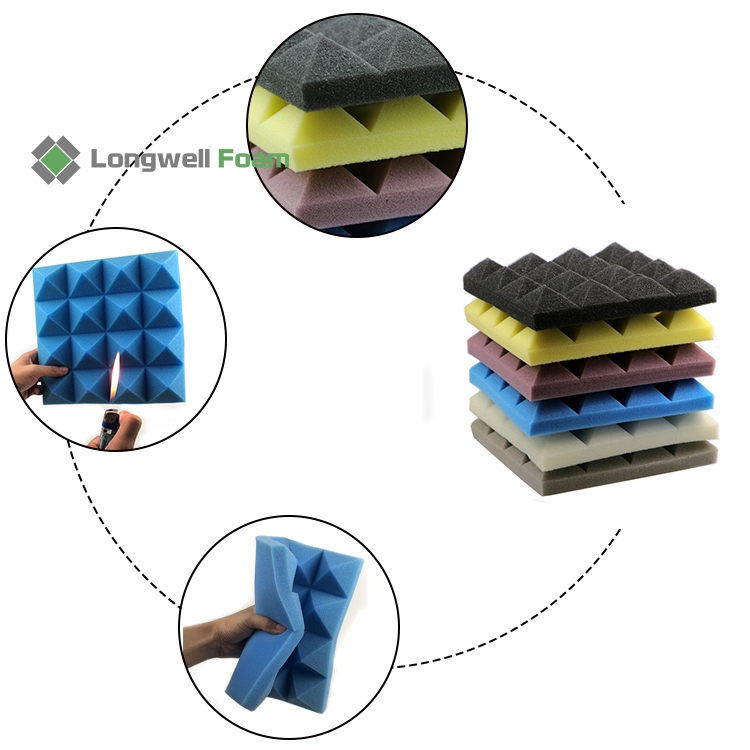Pyramid sound-absorbing sponge with its special appearance and good acoustic characteristics,concave-convex and honeycomb curved surface structure of the material can weaken the sound wave repeated reflection and reduce the noise transmission.it makes you sound more dynamic,Pyramid foam provides moderate sound control on walls or ceilings, especially ones not parallel to the floor.
Acoustic Foams for Construction & Indoor Acoustics
In order to keep the acoustic atmosphere as quiet and pleasant as possible, acoustic foams significantly reduce the noise load. They are used in the following areas, for example:
- Sound insulation (sound absorption)
- Sound insulation (airborne sound, footstep sound)
- Sound protection
- Sound reduction of all kinds (such as through cover elements)
Acoustic Foams for Industrial Acoustics Applications
In the area of acoustics, foams can be effectively used in many different ways to optimize audio impressions, sound behavior and soundscapes.
- Agricultural equipment
- Heating burners
- Insulations
- Lighting aggregates
- Seals
- Thermal insulations
- Upholstery
- Vacuum cleaners
- Ventilation equipment
- Washing machines
- Coffeemakers
- Compressors
- Construction equipment
- Cooling units
- Extraction units
- Gardening equipment (such as electric hedge trimmers)

